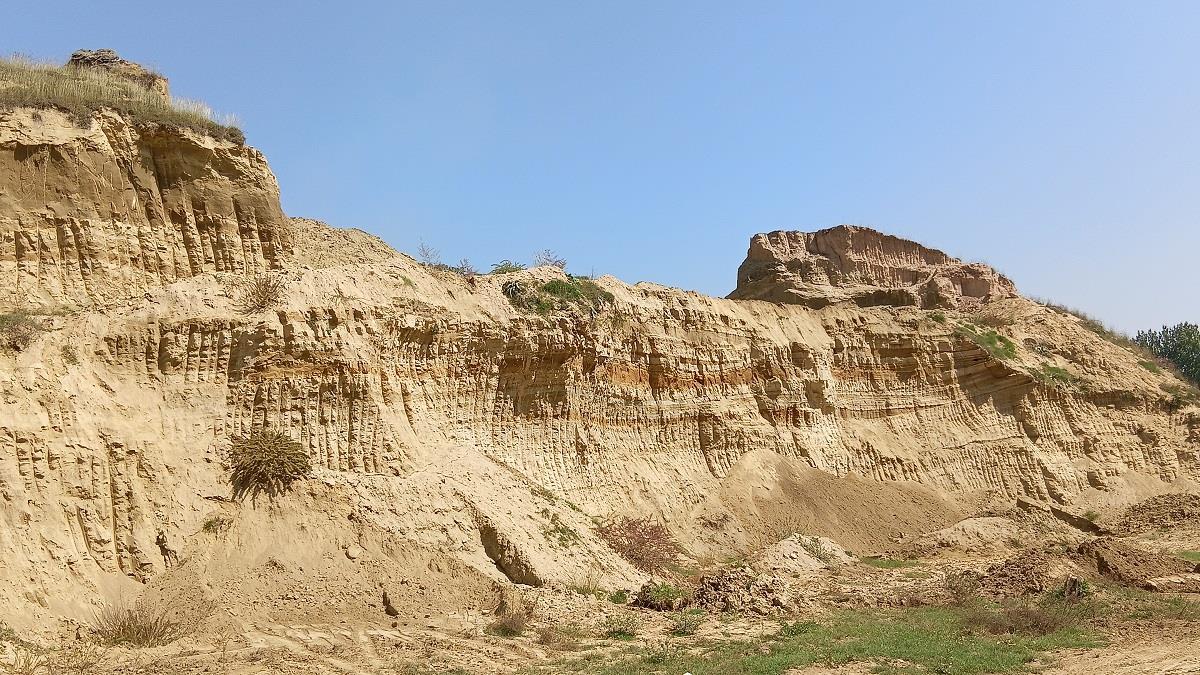
Will Budgam Bypolls Finally Address Kashmir's Mining Mess?
Photo by Author
The Election Commission of India has announced bypolls for Budgam and Nagrota assembly seats. The voting will take place on November 11, and the results will be declared on November 14. The Budgam seat fell vacant when Chief Minister Omar Abdullah decided to keep Ganderbal. During last year's elections, he had won both seats, defeating his opponents by wide margins.
Budgam lies at the doorstep of Srinagar, but feels far from it in every sense. Drive through Palar, Wahabpora, Garend, Paimus, Nasrullahpora, or Sholipora, and it's easy to forget that this is one of the closest districts to the summer capital. The roads are broken, the water is unsafe, and the electricity flickers through the night. The air carries a thick mix of dust and smoke, a constant reminder of what unplanned mining and industrial greed can do to a place once known for its fertile soil and calm fields.
I have travelled through these villages for years. The dust on Budgam's roads rises like a permanent cloud. It settles on trees, roofs, windowpanes, and food in open shops. Villagers sweep, wash, and wipe every day, but the dust always returns.
What troubles me most is what lies beneath that dust: the slow destruction of Budgam's land, air, and people.
Over the past two decades, Budgam's famous Karewas, those ancient plateaus rich in clay and minerals, have been ripped open for sand and soil. Once covered with almond trees, maize, and wheat, these lands now resemble open wounds.
The damage accelerated after the Srinagar Ring Road project began. Contractors bulldozed Karewas in Palar, Mamath, and Ichkoot to extract clay for road construction. Truckloads of soil were carried to Srinagar for filling and construction. Very little of this revenue reached local panchayats.
What should have benefited the people became a private business run under the shadow of government departments.
When I drive along the Ring Road today, I remember what stood there not long ago: almond orchards, corn fields, and golden wheat swaying in the wind. All gone.
The land was taken apart piece by piece. The Mining Department, Revenue officials, and even police looked away. Some officers tried to stop the illegal extraction, but they could not fight a network so deeply entrenched.
The same story continues with brick kilns. Budgam has around 100 to 150 of them, most running without any permission from the Pollution Control Committee. They are everywhere: rising from fertile fields like smoke-stained towers. They consume land, poison the air, and change the colour of the sky. The land that once fed thousands has become wasteland. Paddy fields that produced rice are now buried under ash and clay, in open violation of land and pollution laws.
The local administration claims it has limited power. The Pollution Control Committee blames the district officials. Each side points fingers at the other, while villagers continue to suffer.
The result is a landscape that looks almost war-torn: fields flattened, roads covered in dust, and air thick with soot.
When I walk through these villages, I see women cleaning their windows again and again, trying to keep the dust out. I see shopkeepers wiping their shelves more often than serving customers. I see trucks and tippers rumbling through narrow lanes, carrying clay and bricks as if the earth were theirs to sell.
Some of these operations run barely a kilometre away from the Deputy Commissioner's office, but nobody intervenes. Over time, this illegal work has become normalised, as if Budgam's soil and lungs are meant to be sacrificed.
The health crisis is severe. Many residents suffer from asthma, bronchitis, and other respiratory diseases. In the summer, waterborne infections like hepatitis and jaundice rise sharply. The brick kiln workers, mostly non-locals, live in poor conditions and defecate near open water sources, contaminating the streams that villagers depend on.
Agriculture, once the backbone of Budgam's economy, is dying. Hundreds of hectares of farmland have been lost forever. The Karewas that once produced almonds and apples are now barren. For a district that once symbolised fertility and rural craftsmanship, this is a slow death.
Over the years, Budgam's politics have been driven by emotions and sectarian loyalties. Development rarely entered the conversation.

Legal Disclaimer:
MENAFN provides the
information “as is” without warranty of any kind. We do not accept
any responsibility or liability for the accuracy, content, images,
videos, licenses, completeness, legality, or reliability of the information
contained in this article. If you have any complaints or copyright
issues related to this article, kindly contact the provider above.
Most popular stories
Market Research

- Crypto Market Update: Pepeto Advances Presale With Staking Rewards And Live Exchange Demo
- Kucoin Appeals FINTRAC Decision, Reaffirms Commitment To Compliance
- Cregis And Sumsub Host Web3 Compliance And Trust Summit In Singapore
- Chartis Research And Metrika Release Comprehensive Framework For Managing Digital Asset Risk
- Nodepay Launches Crypto's Largest Prediction Intelligence Platform
- Schoenherr Opens London Liaison Office As Gateway To Central Eastern Europe




















Comments
No comment